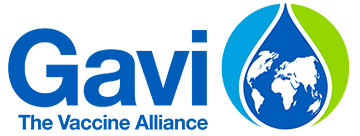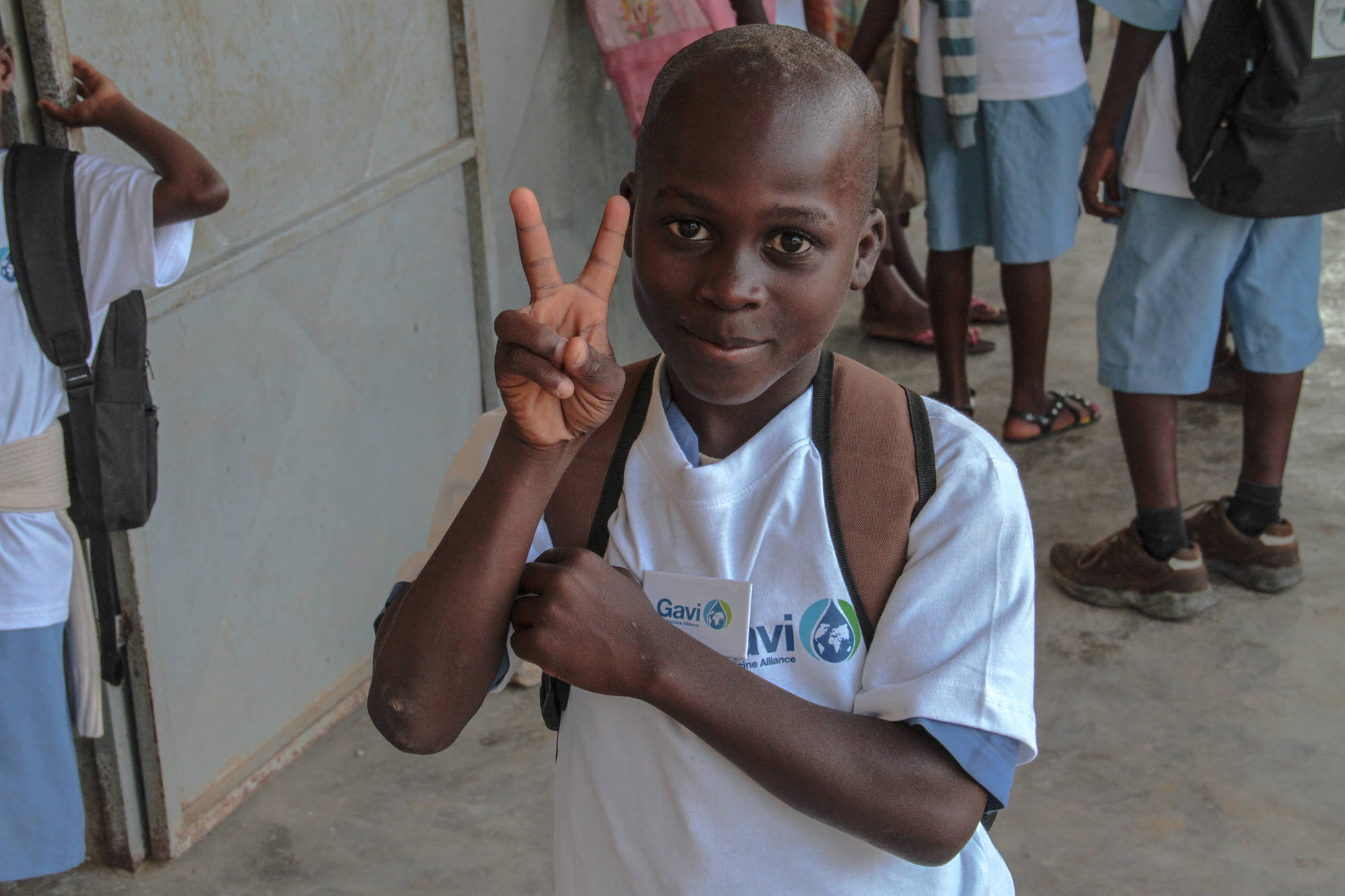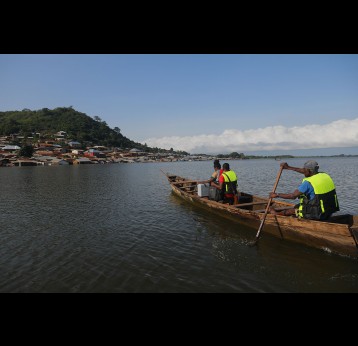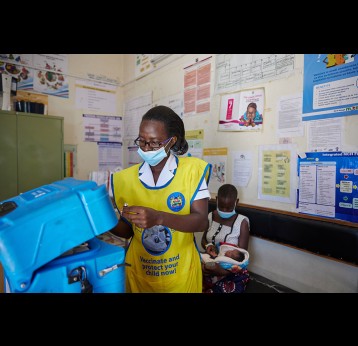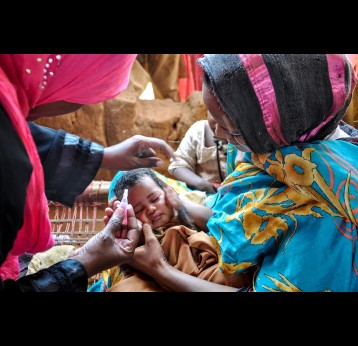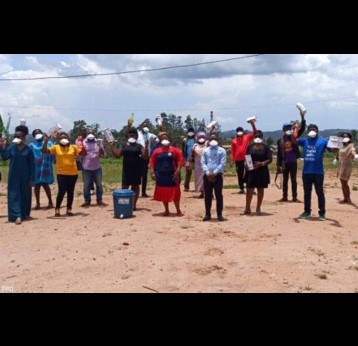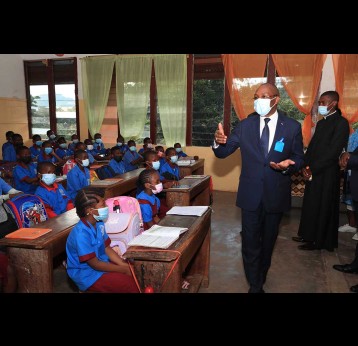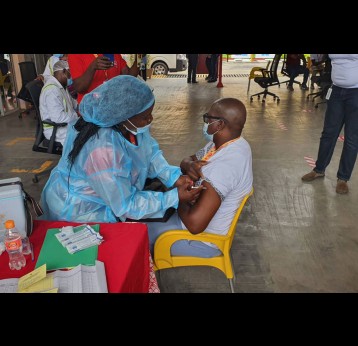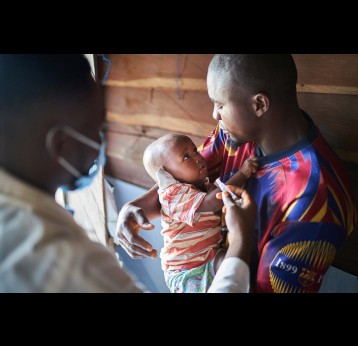Country Information
Key immunisation indicators
Data sourcesApprovals are a subset of commitments for which funding availability and programme performance has been assessed as satisfactory. Only such approved amounts can be disbursed subject to all other conditions for disbursement being met by the countries. Approvals are typically granted for the current year and one further year.
Commitments represent endorsements of multi-year programme budgets made by the Gavi Board, Executive Committee or the CEO. These endorsements do not constitute a liability to pay but instead send a positive signal that Gavi intends to fund a programme over its entire life span subject to performance and availability of funds.
Disbursements by 'Programme Year' in the graph shows the payments made from 2020 up to the date of the report. The payments are shown by the programme year to which they relate irrespective of the calendar year in which they were made. The programme year is the year in which the relevant vaccine/cash programme is being implemented.
Annual figures may reflect negative values due to refunds from previous years or allocation of prepayments to reflect actual apportionment by country.
Disclaimer: the boundaries and names shown and the designations used on this map do not imply the expression of any opinion whatsoever on the part of Gavi, the Vaccine Alliance concerning the legal status of any country, territory, city or area or of its authorities, or concerning the delimitation of its frontiers or boundaries. Dotted lines on maps represent approximate border lines for which there may not yet be full agreement.
This Gavi country data is made available under the Creative Commons BY 4.0 license: https://creativecommons.org/licenses/by/4.0/
Latest News
All News
Shipments to African countries herald final steps toward broader vaccination against malaria
More than 330,000 doses of WHO-recommended RTS,S malaria vaccine arrived last night in Cameroon – a historic step towards broader vaccination against one of the deadliest diseases for African children.
Twelve countries across different regions in Africa are set to receive 18 million doses of the first-ever malaria vaccine over the next two years.
Funding disbursed to boost vaccine access in humanitarian and fragile settings
The funding will enable international and local civil society organisations to complement public health service efforts by accessing communities not reached by government services, such as in cross-border settings and conflict zones, across the…
How Cameroon is making the Africa Cup of Nations COVID-safe
While there were concerns over the threat posed by COVID-19 at Africa’s premiere football tournament, host nation Cameroon is working hard to limit the spread.
Journalists fighting the pandemic: Cameroon's COVID-19 unsung heroes
The media men and women in the country are doing their all to reverse this phenomenon.
Vaccine Ambassadors: The race to vaccinate Cameroon’s school communities
Cameroon is considering taking COVID-19 vaccines to schools amid a rise in the number of new cases.
Cameroon is dealing with two conflicts amid the pandemic
The war against Boko Haram in Cameroon's northern region and the struggle against armed secessionists in the west have taken a significant toll on vaccine roll-out.
Why Africa needs to manufacture its own vaccines
Dr John Nkengasong is a Cameroonian virologist and Director of the Africa Centres for Disease Control and Prevention (Africa CDC), which is working to strengthen the ability of Africa’s public health institutions to detect and respond to disease…
All aboard! Cameroon’s race to vaccinate every child
Cameroonian health workers are going the distance to reach the remote Island of Manoka on a quest to ensure that no child is left behind.
Data sources
| Name | Source | Date |
|---|---|---|
| Total population, 2024 | United Nations, World Population Prospects (UN WPP), July 2024 release | 2024-07-11 |
| Birth cohort (live births), 2024 | United Nations, World Population Prospects (UN WPP), July 2024 release | 2024-07-11 |
| Surviving infants (infants surviving to 1 year), 2024 | United Nations, World Population Prospects (UN WPP), July 2024 release | 2024-07-11 |
| Infant mortality rate (deaths <1 year per 1,000 births), 2023 | UN Inter-agency Group for Child Mortality Estimation (UN IGME), March 2025 release | 2025-03-25 |
| Under-five mortality rate (deaths <5 years per 1,000 births), 2023 | UN Inter-agency Group for Child Mortality Estimation (UN IGME), March 2025 release | 2025-03-25 |
| Gross national income (GNI) per capita, Atlas method (current US$), 2024 | World Bank national accounts data, and OECD National Accounts data files, July 2025 release | 2025-07-01 |
| Zero-dose children, 2024 | WHO/UNICEF Estimates of National Immunization Coverage (WUENIC), July 2025 release; figures calculated using number of surviving infants from UN World Population Prospects (UN WPP) | 2025-07-15 |
| % reduction in number of zero-dose children, 2019–2024 | WHO/UNICEF Estimates of National Immunization Coverage (WUENIC), July 2025 release; figures calculated using number of surviving infants from UN World Population Prospects (UN WPP) | 2025-07-15 |
| DTP1/DTP3/MCV1 coverage (%), 2024 | WHO/UNICEF Estimates of National Immunization Coverage (WUENIC), July 2025 release | 2025-07-15 |
| Drop-out from DTP1 to DTP3, 2024 | WHO/UNICEF Estimates of National Immunization Coverage (WUENIC), July 2024 release | 2025-07-15 |
| Drop-out from DTP1 to last routine dose of MCV, 2024 | WHO/UNICEF Estimates of National Immunization Coverage (WUENIC), July 2025 release | 2025-07-15 |
| Geographic equity of DTP3 coverage in 20% of districts with lowest coverage, 2024 | WHO/UNICEF Joint Reporting Form (JRF), July 2025 release | 2025-07-03 |
